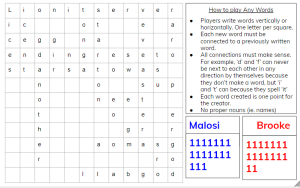This week for writing we learned about how to understand how we can ensure ingredients and food are safe to eat.
First, we had to choose three topics related to food safety that I find important or interesting. The topics are :
- Perishable foods
- Fresh fruits and vegetables
- Dry goods
- Canned and packaged foods
- Leftovers and prepared meals
- Labelling and Organisation (storage).
Next, we had to make a copy of a document to organise the research we were finding about the topics before I had to begin writing down information.
Then, we had to research the state the importance of proper food storage and its impact on food safety. Food poisoning is basically caused by bacteria from foods that have been incorrectly stored, prepared, handled or cooked. Food with poisoning bacteria may look, smell and taste normal. If food is not stored properly, the bacteria in it can multiply to dangerous levels.
Lastly, we had to write down information about the 3 topics into the columns. For example: Fresh vegetables and Fruits. Fruits and vegetables contain important vitamins. There are many fruits and vegetables available and many ways to prepare,cook and serve them. A diet high in fruit and vegetables can help protect you against cancer, diabetes and heart disease.
I enjoyed doing this task. I did well at researching the state the importance of proper food storage and its impact on food safety. I need to improve on adding more details into more information.
